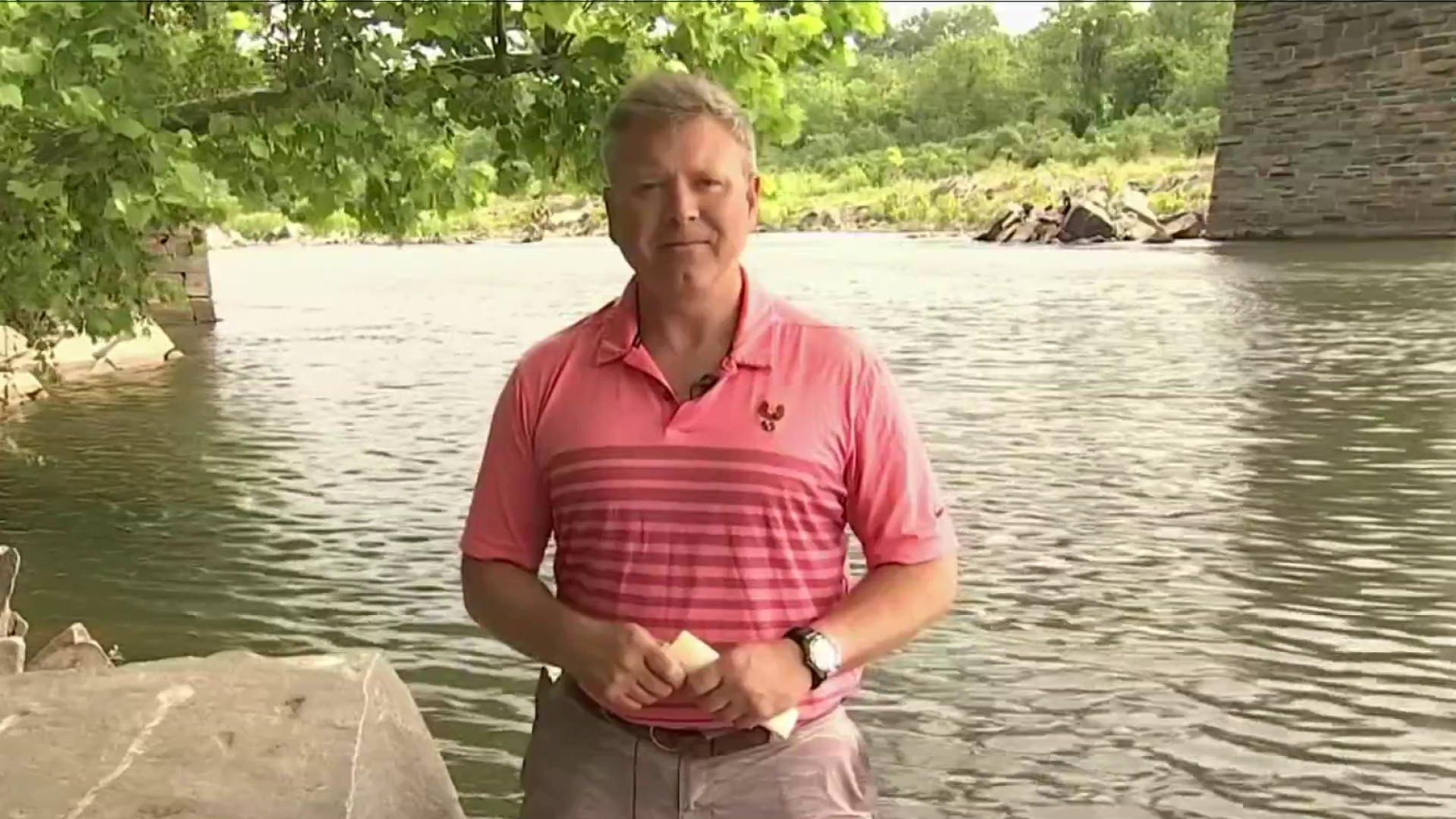The D.C. area needs more rain.
Low stream flow levels in the Potomac River, the area’s main supply of drinking water, triggered daily drought monitoring in the area Monday, according to the Interstate Commission on the Potomac River Basin (ICPRB)
"We have began active drought monitoring due to the low river flow," @PotomacCommis tweeted. "We'll send daily reports to partners w/ flow, weather, and water-use data."
We're making it easier for you to find stories that matter with our new newsletter — The 4Front. Sign up here and get news that is important for you to your inbox.
The stream flow is measured with a US Geological Survey gage at Point of Rocks, Maryland. According to the Monday monitoring report, the river flow fell 2,000 cubic feet per second (cfs) below the Cooperative Water Supply Operations on the Potomac’s (CO-OP) threshold.

ICPRB basin said there's a higher-than-normal chance that water will have to be released into the Potomac from upstream reservoirs later this year. This could include Little Seneca Reservoir in Boyds, Maryland, or Jennings Randolph Lake, on the West Virginia-Maryland border.
These upstream locations are used to make water supply demands and “reach an environmental flow-by of 100 million gallons per day (MGD) on the Potomac River at Little Falls dam near Washington, D.C.,” according to the ICPRB website.
There was .23 inches of rainfall at Washington Dulles National Airport Monday, according to the Storm Team4 Forecast. The D.C. area is in a moderate drought and the total rainfall so far this year is at 10.45 inches, making it the fourth driest year on record.

“So far we have been able to avoid the scorching heat, however with all of July and August still in front of us, I worry about this drought getting extremely worse,” Storm Team4 Meteorologist Chuck Bell said.
Upstream of the Potomac River has not been quite as dry as east of the Blue Ridge, Bell said. In D.C., he has noticed crunchy brown grass circles in the Logan Circle neighborhood.
"It's not normally so crunchy and dry so early in the summer season, but it's been super dry all through the calendar year," Bell said.
A drought is when natural or managed water systems do not meet human or environmental needs because of low stream flow, according to Maryland’s Department of the Environment website. The four drought indicators are precipitation levels, stream flows, groundwater levels and reservoir storage.



